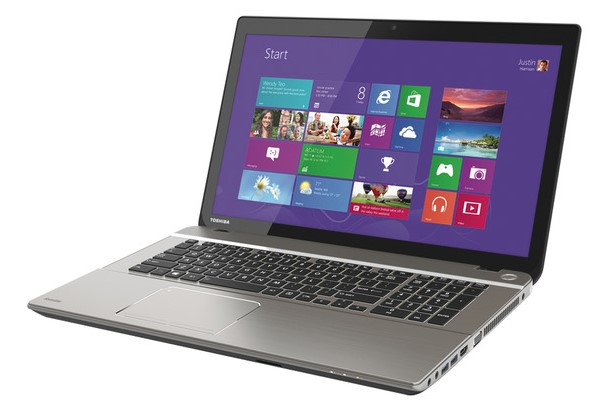Translation into Latin American and North American Spanish

The American continent as a whole is one of the most dynamic regions in the world and its economy grows on a par with its imports (+10% in 2017) and exports. Economic collaboration between both regions is a priority for the European Union, as demonstrated by the free trade agreement that will soon enter into force with Mercosur (Argentina, Brazil, Paraguay and Uruguay).
Índice de contenidos
Index of contents
Index du contenu
Inhaltsverzeichnis
Indice dei contenuti
If you’re thinking about adapting your products and your website to the specific characteristics of the Spanish language throughout America, you will no doubt be asking yourself the following questions: Which variant of Spanish should I adopt? International, neutral, North American or Latin American Spanish? All of these variants have one thing in common: none of them actually exist.
Translation into Spanish
It is widely accepted that the Spanish spoken in the 21 countries worldwide where it is an official language is practically the same. Its differences lie in spoken and colloquial language, and not so much in more formal registers or in its written form. However, each translation, as technical as it may be, has a combination of registers and uses common words. How is it possible to achieve a good translation into Spanish for the Latin American market?
An ideal translation should sound natural, as if it were the source text. Without taking into account certain types of text (literary, judicial or legal), the translation should be similar to the source, written with the target audience in mind and without using strange terms. Which strategy should be adopted to produce a quality translation when targeted at a wide audience? How is it possible to make sure that potential customers in different countries identify with the language used?

Latin American Spanish: opportunity or lie?
The idea of Latin American Spanish has emerged as a result of the opposition between the spoken language in Spain, Castilian Spanish, and that used in the eighteen Latin American countries, which is considered as standard. Proof of the widespread use of this term are the series and films dubbed in “Latin Spanish”. Although attempts are made to be as neutral as possible, the idioms and accents used are generally Mexican, for the simple reason that the majority of dubbing studios are located in Mexico. Nevertheless, even in the same country, the differences between the spoken variants may be as different as peninsular Spanish and its American variants.

For obvious financial reasons, several companies have chosen to translate their documents into a single variant of Spanish, Latin American Spanish. This artificial variant of the language has no specific rules, it has no dictionary or references. It is a language that is being invented by translators with no real consistency or uniformity. It attempts to erase the differences and the specific uses of each country or region, proposing neutral general terms or descriptions. It therefore results in an artificial and unfamiliar language. You may wonder about the effectiveness of a marketing campaign or the clarity of a user manual in Latin American Spanish.
North American Spanish: a viable solution?
Nowadays, the Hispanic population in the United States has over 57 million people, 17.7% of the population. It is a market with an interesting purchasing power, and is one of the targets of several companies in the United States. The existence of such a market implies the translation of advertising material and of product documentation.
The Spanish spoken by Hispanics in the United States is highly influenced by English, but it is far from being standard. Just like Latin American Spanish, North American Spanish is a veritable patchwork, with people from all countries of Central America, South America and the Caribbean. It basically has the same problems as for Latin American Spanish.

Vocabulary selection is a crucial but tricky matter and, although attempts are made to use the most neutral expressions possible, it is always necessary to select either one expression or another. A possible strategy is to carefully examine the region. In Arizona, for example, 88.8% of Hispanics are Mexican. Focusing on the potential buyers of a specific product is another tactic that could be used. Whether high-tech products or luxury items, they are aimed at a specific segment of the population, and not necessarily the largest.
Two different solutions for translation into Latin American Spanish: Microsoft vs. McDonald’s
On one hand, Microsoft, a multinational IT company that sells its software across the world and, on the other, McDonald’s, the largest fast food chain in the world. Both companies are American and their sales volume is greater than the GDP of over 150 countries in the world. They have totally different strategies to reach Spanish-speaking markets in Latin America. Does either of these two companies have the perfect marketing strategy designed with translation in mind? What are the reasons behind these decisions? Which is the most effective strategy?
Microsoft: erasing differences
First of all, let’s take a look at Microsoft. The majority of its software is created in English and, based on its style guide and its terminological database, a single translation is used for each term in English. Piece by piece, it has created a neutral variant of Spanish that is understood by all but familiar to nobody. An example of this policy is the use of the word “equipo” to refer to computer, discarding the use of the Latin American “computadora” and the Spanish “ordenador”.
This approach to the style guide has been faced with the rejection of many users due to the strange and artificial nature of its terminology. The idea behind this concept of “neutral Spanish” is therefore purely commercial and it does not respond to the linguistic reality. Microsoft’s products are marketed throughout the world and it is therefore much more profitable to provide a single version of the products in Spanish, at the expense of clarity for users.

McDonalds: cultivating differences
It’s one thing to be able to use an “easy to understand” software and quite another to be attracted by a product to the point of actually wanting to buy it. This may be the reason behind the greatest difference between Microsoft’s and McDonald’s strategies. The fast food firm carefully selects its terms and adapts its recipes to each specific country. This marketing strategy can also be seen on a global level: while the company’s logo has had a green background in Europe since 2009, in Latin America it continues to have the original red background. This change on the old continent basically comes in response to environmental concerns and the bad reputation associated to fast food, but this greenwashing strategy is not the only strategy employed. Hamburger recipes are adapted to local tastes: sweet and sour sauce in Japan, Paneer and curry in India, McKebab in Israel and McRice in the Philippines, without forgetting Camembert nuggets in France... The American company adapts to the world’s different palates.

This course of action can also be observed in the translation of terms in Latin America. In each country, the website is similar but different. When referring to hamburgers, “sándwiches de carne” are offered in Chile and Argentina, while “hamburguesas de carne” are available in Mexico. Identifying with the product, whether due to the fact that it is familiar or because its recipe includes local elements (guacamole, for example), is part of the same strategy of closeness and trust towards the familiar.
Which is the best strategy to adopt for translation into Latin American Spanish?
As we have seen above, the first thing that should be taken into account before requesting a translation quote is the objective of the text (Skopos theory) and the target audience. This depends, among other things, on the type of market that you want to reach. If your product is aimed at professionals and has extremely specific terminology, it’s much easier to apply a neutral language that can be adapted to many different countries in America. If you want to reach or inform ordinary people, it will be much more complicated to use the same translation in several different countries.

Marketing material contains carefully selected words, making reference to cultural facts, playing with words, etc. How is it possible to use the same advertising campaign in several countries when the vocabulary and history are so different?
The use of Latin American Spanish could be a solution, as long as a second revision stage is carried out by translators from the countries where the products will be marketed.
Another solution, which is more affordable but less efficient, would be to settle for a single translation into Latin American Spanish, as neutral as possible, corrected by a second translator from another country to eliminate all regional uses.
The best solution in our opinion: each country has its own specific language use, which is in continuous evolution. If you want to attract consumers with your product, the best thing you can do is to learn how to communicate with them and attract their attention in their own language, as if the translation were the original...
Other articles you may be interested in:

Graduate in Hispanic Philology from the University of Toulouse (France) and Master in Translation and Cultural Intermediation (EN-ES>FR) from the University of Salamanca.



Add new comment